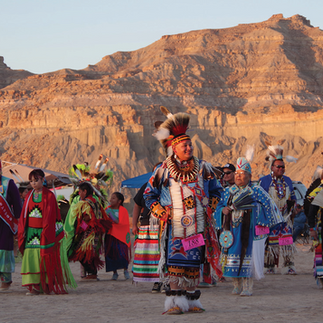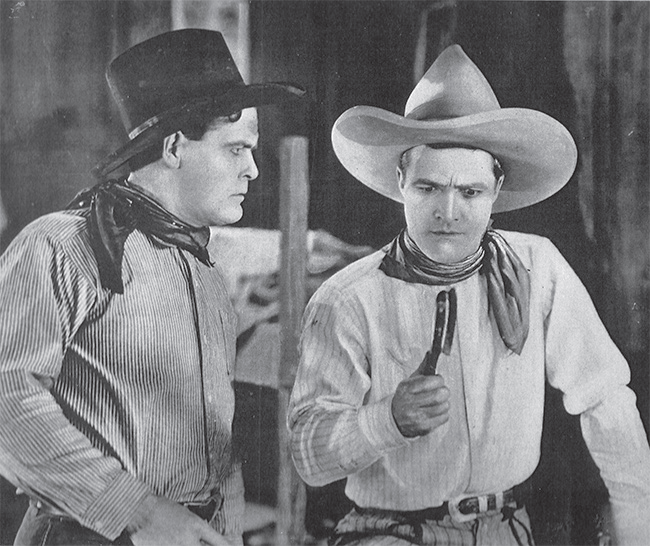Native American Pow Wow held in Big Water
- Phil Clark

- Apr 18, 2024
- 4 min read
The skies above Big Water were filled with Native American music while dancers performed traditional pow wow dances on April 12 and 13. The event was organized by the Navajo Language/ Unity Booster Club at Page High School as a fundraiser for the students in the Navajo Language program at the school.
Left to right, photos by Phil Clark:
The color guard leads the dancers into the arena at Big Water Community Park for the Grand Entry.
Dancers design and create their regalia based on the type of dance competition.
Two colorful jingle dancers enjoying the spring evening.
Dancers at the Navajo Language/Unity Booster Club Pow Wow.
The dancing lasted well after sunset. Fringes fly as a dancer spins in a group dance.
Generations are connected with dance, during the Grand Entry.
People brought their lawn chairs, umbrellas and sun shades forming a circle around the field at Big Water Community Park in Big Water, Utah. Erny Zah, master of ceremonies, was the voice of the event as participants, family, friends and tourists watched a Gourd Dance and a Grand Entry each day.
Dancers, children and adults alike, in their regalia, competed in different age groups in the Traditional, Grass, Jingle and Fancy dances. While girls and boys competed in Traditional and Fancy Dances, boys exclusively compete in the Grass dance and girls complete in the Jingle dance. Some non-natives may refer to the dancers as wearing costumes. The dancers call what they wear regalia because it is part of what they are as native Americans and not a “costume” or “disguise.” Each dancer designs and creates his or her own regalia for use in dance competition in a variety of colors and styles.
While there is no agreement as to the exact origin of the Grass Dance, it generally accepted as a Northern Plains dance that was used by warrior societies and only performed by males. The grass dancers’ regalia is covered with brightly colored fringe made of either yarn, broadcloth or ribbon. To some the fringes are reminiscent of the tall grasses that grew across the plains.
The Jingle Dance is danced with regalia consisting of a jingle dress, which includes ornamentation with multiple rows of metal “bells” shaped as cones, that create a jingling sound as the dancer moves. Early jingle dresses were made with metal lids from chewing tobacco cans. The ‘bells’ cover the regalia gown in rows and is held in place only at the pointed end of the cone. The modern-day jingle dancer carries a feather fan, often wearing eagle plumes or feathers in her hair. People can give jingle dress dancers tobacco to have them pray for themselves or people they care for that are not well. With several rows on each gown, the tiny bells sounds somewhat like rain.
The beauty of a Native American Pow Wow is as much the colors that the dancers wear as the music, consisting of drumming and chanting, provides the ‘heartbeat’ of the dances.
The dancers competed as Juniors, from ages six - 12, Teens, from ages 13 - 18 and Adults, from age 18 - 59. Golden Age dancers were those older than 60. A completion among drummers was part of the event as well.
There were non-native people in the audience, some of whom hadn’t witnessed such an event before. Local area residents enjoyed the event, reconnecting with friends and family members. A young couple from Switzerland had earlier visited Antelope Canyon and Horseshoe Bend and were continuing their trip the next day. They were glad to have found out of the event as they had only heard of pow wows and hadn’t been to one before. Many in the audience were from the local Page/ Kane County area. The weather was excellent, as good as it gets this time of year.
Three times during the two days, there was the Gourd dance followed by the Grand Entry. The Gourd Dance encouraged spectators to donate to help the students with their trip. The dancers all entered the round arena in the Grand Entry, in full regalia. They danced into the center of the arena making a long serpentine line that that wove its way in front of the audience, creating a parade of spectacular color.
The Navajo Language/ Unity Booster Club provided fry bread, Navajo tacos and burgers, pickles, soft drinks and refreshments for those who would like to sample traditional cuisine. There were other booths present, representing local Navajo tour businesses and marina facilities on Lake Powell, as well as vendors for jewelry and native art. It was a great way to meet other people and sample the traditional cuisine.
As the sun started setting, the evening dances were bathed in the warm light. The cliffs in the background, made golden by the setting sun, made for a memorable sight. The dancing and competition continued well after dark.
The event was a benefit for the Page High School Navajo Language/ Unity Booster Club. The proceeds of the event will go to help fund a class trip to a national gathering in Portland, Oregon, to dance and meet with other Native American and First Nations youth. The Club would like to thank the Mayor and City of Big Water for the successful event.
















